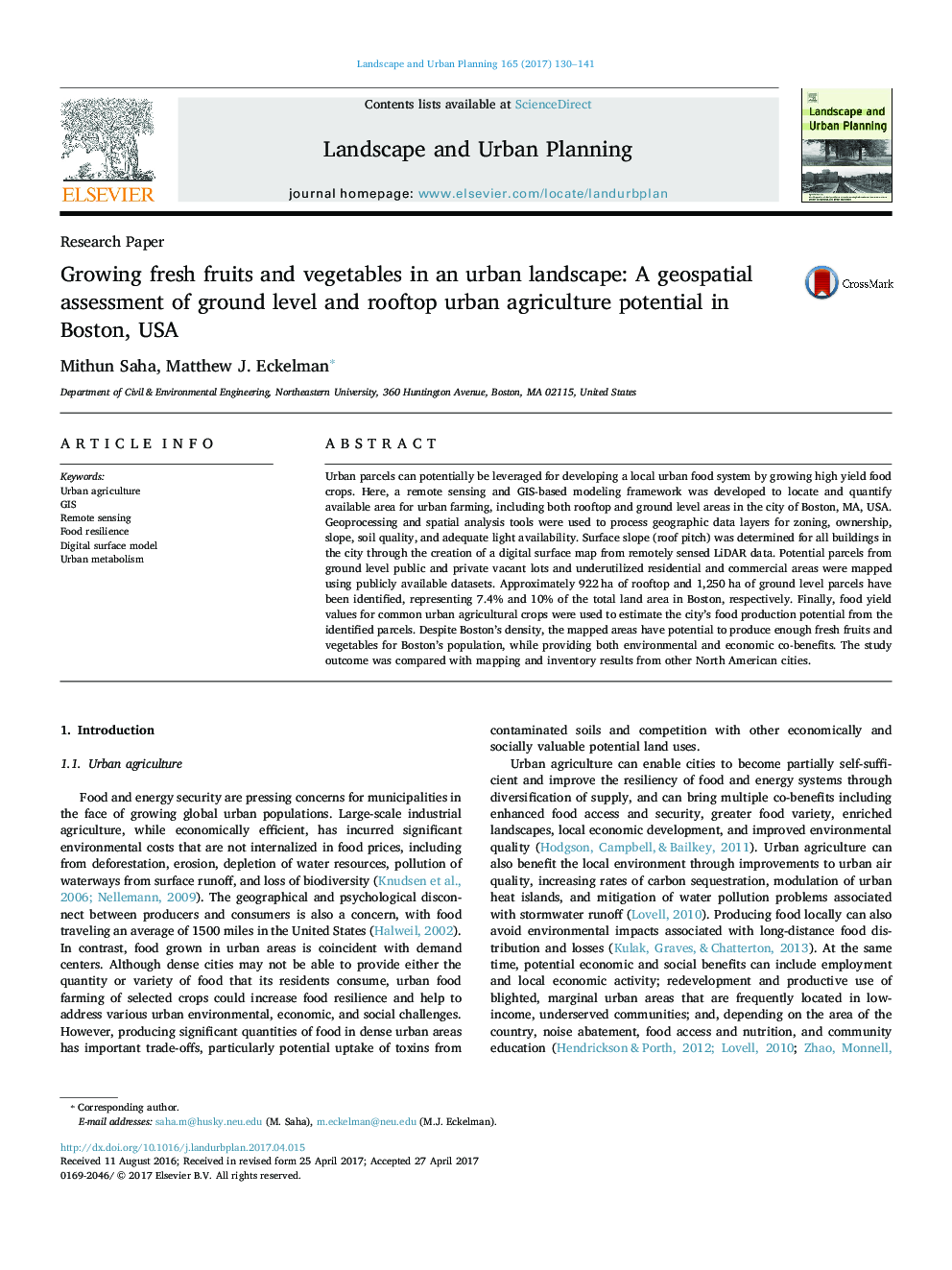| Article ID | Journal | Published Year | Pages | File Type |
|---|---|---|---|---|
| 5115167 | Landscape and Urban Planning | 2017 | 12 Pages |
Abstract
Urban parcels can potentially be leveraged for developing a local urban food system by growing high yield food crops. Here, a remote sensing and GIS-based modeling framework was developed to locate and quantify available area for urban farming, including both rooftop and ground level areas in the city of Boston, MA, USA. Geoprocessing and spatial analysis tools were used to process geographic data layers for zoning, ownership, slope, soil quality, and adequate light availability. Surface slope (roof pitch) was determined for all buildings in the city through the creation of a digital surface map from remotely sensed LiDAR data. Potential parcels from ground level public and private vacant lots and underutilized residential and commercial areas were mapped using publicly available datasets. Approximately 922Â ha of rooftop and 1,250Â ha of ground level parcels have been identified, representing 7.4% and 10% of the total land area in Boston, respectively. Finally, food yield values for common urban agricultural crops were used to estimate the city's food production potential from the identified parcels. Despite Boston's density, the mapped areas have potential to produce enough fresh fruits and vegetables for Boston's population, while providing both environmental and economic co-benefits. The study outcome was compared with mapping and inventory results from other North American cities.
Related Topics
Life Sciences
Agricultural and Biological Sciences
Ecology, Evolution, Behavior and Systematics
Authors
Mithun Saha, Matthew J. Eckelman,
